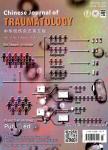The wound healing potential of collagen peptides derived from the jellyfish Rhopilema esculentum
The wound healing potential of collagen peptides derived from the jellyfish Rhopilema esculentum作者机构:The Engineering Research Center of Peptide Drug Discovery and Development China Pharmaceutical University Nanjing 211198 China Department of Marine Pharmacy College of Life Science and Technology China Pharmaceutical University Nanjing 211198 China
出 版 物:《Chinese Journal of Traumatology》 (中华创伤杂志(英文版))
年 卷 期:2019年第22卷第1期
页 面:12-20页
核心收录:
学科分类:0403[教育学-体育学] 1002[医学-临床医学] 10[医学]
基 金:supported by the Project Program of State Key Laboratory of Natural Medicines 江苏省自然科学基金 the Priority Academic Program Development of Jiangsu Higher Education Institutions and the Fundamental Research Funds for the Central Universities
主 题:Collagen Collagen peptides Wound healing Jellyfish
摘 要:Purpose: Wound represents a major health challenge as they consume a large amount of healthcare resources to improve patient s quality of life. Many scientific studies have been conducted in search of ideal biomaterials with wound-healing activity for clinical use and collagen has been proven to be a suitable can didate biomaterial. This study in tended to investigate the wound healing activity of collagen peptides derived from jellyfish following oral administration. Methods: In this study, collagen was extracted from the jellyfish-Rhopilema esculentum using 1% pepsin. Sodium dodecyl sulfate-polyacrylamide gel electrophoresis (SDS-PAGE) and fourier transform infrared (FTIR) were used to identify and determine the molecular weight of the jellyfish collagen. Collagenase II, papain and alkaline proteinase were used to breakdown jellyfish collagen into collagen peptides. Wound scratch assay (in vitro) was done to determine migration potential of human umbilical vein endothelial cells (HUVEC) covering the artificial wound created on the cell monolayer following treatment with collagen peptides. In vivo studies were con ducted to determine the effects of collagen peptides on wound healing by examining wound contraction, re-epithelialization, tissue regeneration and collagen deposition on the wounded skin of mice. Confidence level (p 0.05) was considered significant using GraphPad Prism software. Results: The yield of collagen was 4.31%. The SDS-PAGE and FTIR showed that extracted collagen from jellyfish was type I. Enzymatic hydrolysis of this collagen using collagenase II produced collagen peptides (CPi) and hydrolysis with alkaline proteinase/papain resulted into collagen peptides (CP2). Tricine SDSPAGE revealed that collagen peptides consisted of protein fragments with molecular weight 25 kDa. Wound scratch assay showed that there were significant effects on the scratch closure on cells treated with collagen peptides at a concentration of 6.25 μg/mL for 48 h as com



